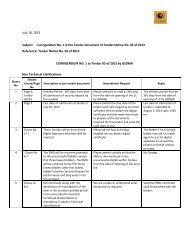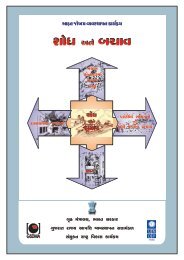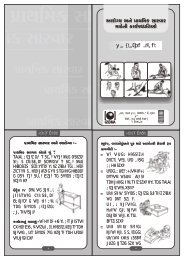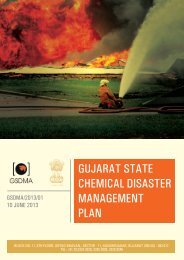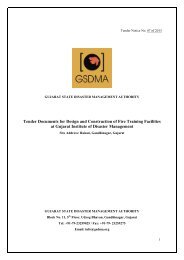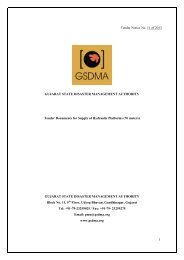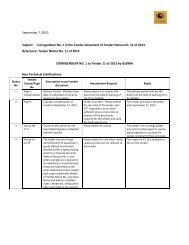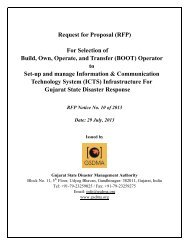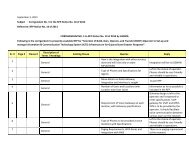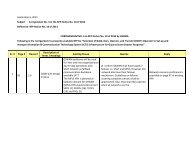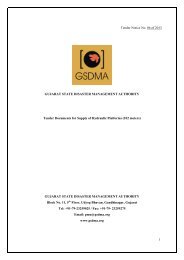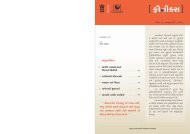GUIDE134Flammable Solids - Toxic and/or CorrosiveERG2012ERG2012Flammable Solids - Toxic and/or CorrosiveGUIDE134POTENTIAL HAZARDSFIRE OR EXPLOSION• Flammable/combustible material.• May be ignited by heat, sparks or flames.• When heated, Vapours may form explosive mixtures with air: indoors, outdoors and sewers explosionhazards.• Contact with metals may evolve flammable hydrogen gas.• Containers may explode when heated.HEALTH• TOXIC; inhalation, ingestion or skin contact with material may cause severe injury or death.• Fire will produce irritating, corrosive and/or toxic gases.• Runoff from fire control or dilution water may be corrosive and/or toxic and cause pollution.PUBLIC SAFETY• CALL EMERGENCY RESPONSE Telephone Number on Shipping Paper first. If Shipping Paper notavailable or no answer, refer to appropriate telephone number listed on the inside back cover.• As an immediate precautionary measure, isolate spill or leak area for at least 25 meters (75 feet) in alldirections.• Stay upwind.• Keep unauthorized personnel away.• Keep out of low areas.• Ventilate enclosed areas.PROTECTIVE CLOTHING• Wear positive pressure self-contained breathing apparatus (SCBA).• Wear chemical protective clothing that is specifically recommended by the manufacturer. It mayprovide little or no thermal protection.• Structural firefighters' protective clothing provides limited protection in fire situations ONLY; it is noteffective in spill situations where direct contact with the substance is possible.EVACUATIONLarge Spill• Consider initial downwind evacuation for at least 100 meters (330 feet).Fire• If tank, rail car or tank truck is involved in a fire, ISOLATE for 800 meters (1/2 mile) in all directions;also, consider initial evacuation for 800 meters (1/2 mile) in all directions.EMERGENCY RESPONSEFIRESmall Fire• Dry chemical, CO 2, water spray or alcohol-resistant foam.Large Fire• Water spray, fog or alcohol-resistant foam.• Move containers from fire area if you can do it without risk.• Use water spray or fog; do not use straight streams.• Do not get water inside containers.• Dike fire-control water for later disposal; do not scatter the material.Fire involving Tanks or Car/Trailer Loads• Fight fire from maximum distance or use unmanned hose holders or monitor nozzles.• Cool containers with flooding quantities of water until well after fire is out.• Withdraw immediately in case of rising sound from venting safety devices or discoloration of tank.• ALWAYS stay away from tanks engulfed in fire.SPILL OR LEAK• Fully encapsulating, Vapour protective clothing should be worn for spills and leaks with no fire.• ELIMINATE all ignition sources (no smoking, flares, sparks or flames in immediate area).• Stop leak if you can do it without risk.• Do not touch damaged containers or spilled material unless wearing appropriate protective clothing.• Prevent entry into waterways, sewers, basements or confined areas.• Use clean non-sparking tools to collect material and place it into loosely covered plastic containers forlater disposal.FIRST AID• Move victim to fresh air.• Call 108 or emergency medical service.• Give artificial respiration if victim is not breathing.• Do not use mouth-to-mouth method if victim ingested or inhaled the substance; give artificialrespiration with the aid of a pocket mask equipped with a one-way valve or other proper respiratorymedical device.• Administer oxygen if breathing is difficult.• Remove and isolate contaminated clothing and shoes.• In case of contact with substance, immediately flush skin or eyes with running water for at least 20minutes.• For minor skin contact, avoid spreading material on unaffected skin.• Keep victim warm and quiet.• Effects of exposure (inhalation, ingestion or skin contact) to substance may be delayed.• Ensure that medical personnel are aware of the material(s) involved and take precautions to protectthemselves.Page 208Page 209
GUIDE135Substances - Spontaneously CombustibleERG2012ERG2012Substances - Spontaneously CombustibleGUIDE135POTENTIAL HAZARDSFIRE OR EXPLOSION• Flammable/combustible material.• May ignite on contact with moist air or moisture.• May burn rapidly with flare-burning effect.• Some react vigorously or explosively on contact with water.• Some may decompose explosively when heated or involved in a fire.• May re-ignite after fire is extinguished.• Runoff may create fire or explosion hazard.• Containers may explode when heated.HEALTH• Fire will produce irritating, corrosive and/or toxic gases.• Inhalation of decomposition products may cause severe injury or death.• Contact with substance may cause severe burns to skin and eyes.• Runoff from fire control may cause pollution.PUBLIC SAFETY• CALL EMERGENCY RESPONSE Telephone Number on Shipping Paper first. If Shipping Paper notavailable or no answer, refer to appropriate telephone number listed on the inside back cover.• As an immediate precautionary measure, isolate spill or leak area in all directions for at least 50meters (150 feet) for liquids and at least 25 meters (75 feet) for solids.• Stay upwind.• Keep unauthorized personnel away.• Keep out of low areas.PROTECTIVE CLOTHING• Wear positive pressure self-contained breathing apparatus (SCBA).• Wear chemical protective clothing that is specifically recommended by the manufacturer. It mayprovide little or no thermal protection.• Structural firefighters’ protective clothing will only provide limited protection.EVACUATIONSpill• See Table 1 - Initial Isolation and Protective Action Distances for highlighted materials. Fornonhighlighted materials, increase, in the downwind direction, as necessary, the isolation distanceshown under “PUBLIC SAFETY”.Fire• If tank, rail car or tank truck is involved in a fire, ISOLATE for 800 meters (1/2 mile) in all directions;also, consider initial evacuation for 800 meters (1/2 mile) in all directions.EMERGENCY RESPONSEFIRE• DO NOT USE WATER, CO 2 OR FOAM ON MATERIAL ITSELF.• Some of these materials may react violently with water.EXCEPTION: For Xanthates, UN3342 and for Dithionite (Hydrosulfite/Hydrosulphite) UN1384, Un1923and UN1929, USE FLOODING AMOUNTS OF WATER for SMALL AND LARGE fires to stop the reaction.Smothering will not work for these materials, they do not need air to burn.Small Fire• Dry chemical, soda ash, lime or DRY sand, EXCEPT for UN1384, UN1923, UN1929 and UN3342.Large Fire• DRY sand, dry chemical, soda ash or lime EXCEPT for UN1384, UN1923, UN1929 and UN3342, orwithdraw from area and let fire burn.• CAUTION: UN3342 when flooded with water will continue to evolve flammable Carbondisulfide/Carbon disulphide Vapours.• Move containers from fire area if you can do it without risk.Fire involving Tanks or Car/Trailer Loads• Fight fire from maximum distance or use unmanned hose holders or monitor nozzles.• Do not get water inside containers or in contact with substance.• Cool containers with flooding quantities of water until well after fire is out.• Withdraw immediately in case of rising sound from venting safety devices or discoloration of tank.• ALWAYS stay away from tanks engulfed in fire.SPILL OR LEAK• Fully encapsulating, Vapour protective clothing should be worn for spills and leaks with no fire.• ELIMINATE all ignition sources (no smoking, flares, sparks or flames in immediate area).• Do not touch or walk through spilled material.• Stop leak if you can do it without risk.Small SpillEXCEPTION: For spills of Xanthates, UN3342 and for Dithionite (Hydrosulfite/Hydrosulphite), UN1384,UN1923 and UN1929, dissolve in 5 parts water and collect for proper disposal.• CAUTION: UN3342 when flooded with water will continue to evolve flammable Carbondisulfide/Carbon disulphide Vapours.• Cover with DRY earth, DRY sand or other non-combustible material followed with plastic sheet tominimize spreading or contact with rain.• Use clean non-sparking tools to collect material and place it into loosely covered plastic containers forlater disposal.• Prevent entry into waterways, sewers, basements or confined areas.FIRST AID• Move victim to fresh air.• Call 108 or emergency medical service.• Give artificial respiration if victim is not breathing.• Administer oxygen if breathing is difficult.• Remove and isolate contaminated clothing and shoes.• In case of contact with substance, immediately flush skin or eyes with running water for at least 20minutes.• Keep victim warm and quiet.• Ensure that medical personnel are aware of the material(s) involved and take precautions to protectthemselves.Page 210Page 211



